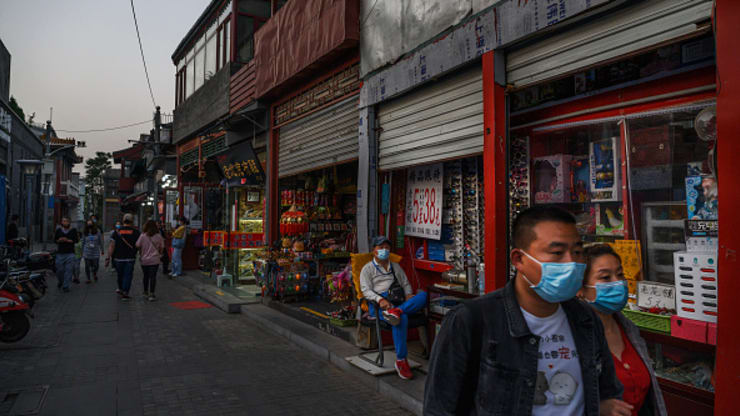China sees less than expected rise in factory output, retail sales continues to contract in May
China’s industrial output rose for a second straight month in May but the gain was smaller than expected, suggesting the economy is still struggling to get back on track after the coronavirus crisis.
Retail sales and investment continued to contract, pointing to an uneven and possibly more drawn-out rebound in other sectors.
Global leaders are closely watching how long it takes China to get back on its feet as they begin to relax their own stringent anti-virus measures and reboot their economies.
Analysts say signs of improvement continue to be seen in China ranging from steel production and car sales to more lights being turned on in industrial parks. However, they warn it could take many months for broader activity to return to pre-crisis levels.
Industrial output growth quickened to 4.4% in May from a year earlier, the highest reading since December, official data showed on Monday. Analysts polled by Reuters had expected a 5.0% rise from 3.9% in April, the first expansion since the virus emerged in China late last year.
But a collapse in export orders amid global lockdowns has left factories more reliant on domestic demand, which is recovering at a more sluggish pace.
Retail sales fell for a fourth straight month. While the 2.8% drop was smaller than the 7.5% slump in April, it was larger than the 2.0% fall tipped by analysts. Heavy job losses and fears of a second wave of infections continue to make consumers cautious.
Sales have fallen as shops, restaurants and other crowded places closed during the pandemic. Though strict anti-virus measures have been relaxed, consumers remain wary.
Fixed asset investment fell 6.3% in January-May from the same period last year, compared with a forecast 5.9% fall and a 10.3% decline in the first four months of the year.
As in past downturns, Beijing is banking on higher infrastructure spending to lead a recovery, and steel mills have cranked up furnaces to over 92% of capacity.
Private sector fixed-asset investment, which accounts for 60% of total investment, fell 9.6% in January-May, compared with a 13.3% decline in the first four months of the year.
China’s economy shrank 6.8% in the first quarter, the first contraction on record. Highlighting the uncertain outlook, the government did not set a GDP growth target this year, the first time in nearly two decades it has not done so.
China’s central bank vice governor said recently that the economic hit from the pandemic was bigger than first expected and that even more policy support was needed.



